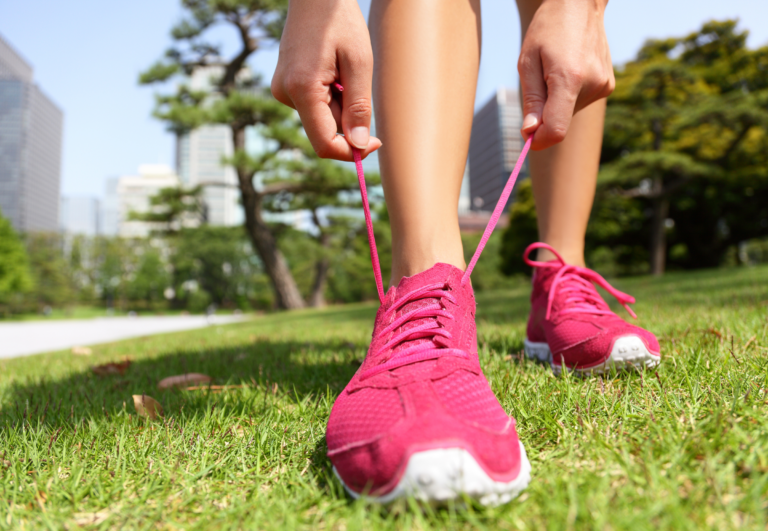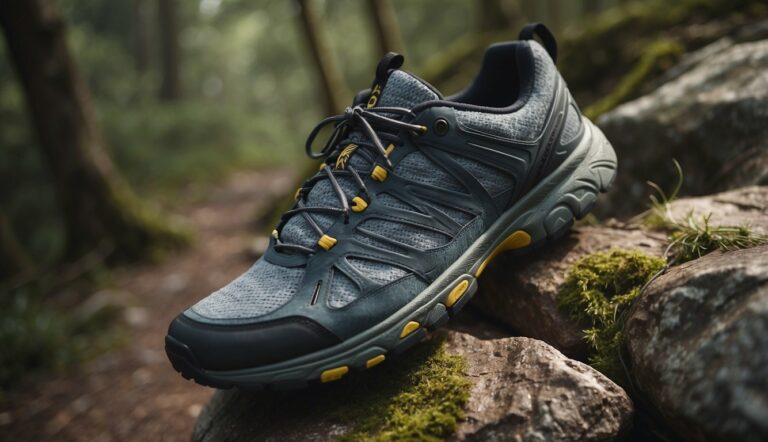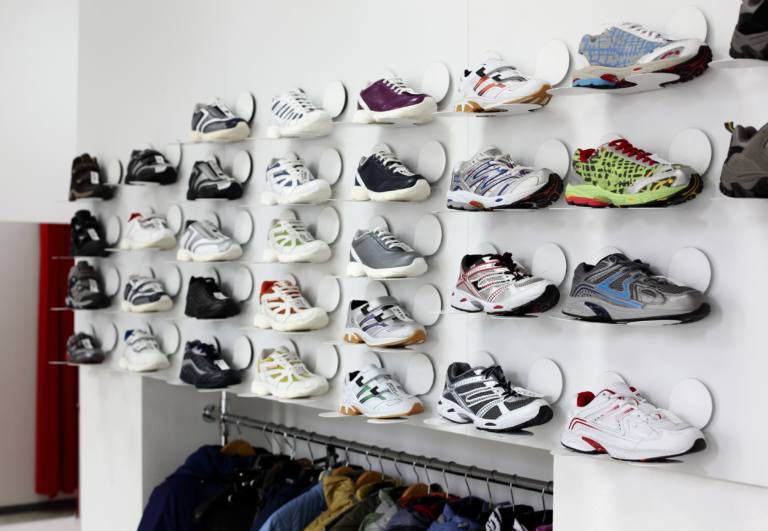Running Shoes: Do They Need to Be Broken In? (Myths Vs Facts)
It is conventional running wisdom that you need to break in running shoes for a long time before adding them to your normal rotation, but do running shoes need to be broken in?
Any running coach or serious marathon runner will tell you not to run a race in brand new running shoes because it could cause blisters, pain, or other discomfort during a while. While modern running shoes often don’t require a long break-in period, it is a good idea to take new running shoes out for short distances for the first few runs to make sure there aren’t any issues with the fit, sizing, and stiffness.
Let’s take a look at a few common myths along with facts surrounding new running shoes, break-ins, and how to get a great experience on your runs.
Myths vs. Facts About Breaking In Running Shoes

In the world of running, there are several misconceptions regarding whether you need to spend time breaking in your running shoes. This section will address common myths and provide facts to give you clarity on the topic.
Myth 1: You Always Need to Break In Your Running Shoes
Myth: It’s a common belief that ALL running shoe pairs require a break-in period before they’re comfortable.
Truth: With the emergence of new technologies in shoe manufacturing, most modern running shoes are designed to fit well and be comfortable straight out of the box.
Myth 2: More Expensive Shoes Don’t Need To Be Broken In
Myth: The price tag of running shoe brands or a specific model is often thought to reflect their readiness to wear without discomfort.
Truth: Regardless of price, some running shoes may feel better after a short period of wear, but this is not a hard and fast rule for all high-end shoes.
Fact 1: Modern Running Shoe Materials Require Less Break-in Than Older Models
Contemporary materials used in running shoes tend to require little to no break-in time because they are designed with flexibility in mind and not just durability.
As such, new running shoes can often be worn comfortably from the first use.
Fact 2: Proper Shoe Sizing and Fit Are More Important Than Breaking Them In
Ensure your running shoes are properly sized; a poor fit can’t be remedied by breaking them in. Priority should be given to how the shoe conforms to your foot shape to prevent blisters and discomfort.
Fact 3: Many Runners Don’t Notice Much Difference After Breaking in Shoes
Some runners do not perceive a significant change in the comfort level after a break-in period. The necessity and effects of a break-in period vary depending on the individual’s unique foot anatomy and running style.
What Does ‘Breaking In’ Running Shoes Mean?

When starting with a new pair of running shoes, you might hear the term break in. This is the process where your new shoes are gradually adjusted to the unique contours of your feet.
Initially, fresh running shoes may feel stiff and might not conform to your feet’s shape, causing discomfort or even pain. By wearing the shoes over time, the fabric and other materials slowly mold to your midfoot and other specific pressure points, enhancing overall comfort.
Breaking in is crucial because it can significantly reduce the likelihood of blisters and other forms of discomfort that could otherwise occur if you ran a long distance in brand-new shoes. This step ensures the shoes flex properly with the movement of your feet and offer the right support and cushioning where you need it the most.
Here are some simple guidelines to break in your new running shoes:
- Wear your running shoes for short periods: Before taking them on long runs, wear the shoes around the house or for short walks.
- Listen to your body: If you notice areas of pain or tightness, give your feet a rest. The shoes should comfortably adapt to your feet, not cause ongoing pain.
- Gradually increase use: Extend the length of your runs incrementally. Start with a few short runs before using them for longer sessions.
By allowing the shoes to adapt to your feet’s shape and movement, you’re setting the stage for many miles of comfortable running. Remember, every runner’s feet are unique, so your break-in period might differ from other runners.
Take the time to understand the feel of your shoes and how they change with use for a better running experience.
Preventing Pain and Discomfort with New Running Shoes

New running shoes can lead to discomfort or even blisters if not properly managed out of the box. Let’s go through some effective strategies to ensure your first strides are as comfortable as possible.
Make Sure Your Running Shoes Have the Correct Fit and Size
By far the most important aspect of running shoes is getting the right size and fit. This will help prevent injuries, stress, and other problems with your legs and feet during training.
To find your ideal shoe size, I recommend visiting a local running store that has a computerized foot screening machine.
These machines take a 3D image of your foot to provide exact length and width measurements as well as identifying arch height, stability issues like pronation or supination, and any differences between your left and right foot. Most machines will also be able to analyze how your foot soles look during your stride while you walk or run.
The great thing about these machines is that you can often get these results emailed to you and they are unlikely to change much over time – allowing you to find the right shoes in the future without having to test each time or make adjustments.
Depending on the store, you might also be able to get on a treadmill for a gait analysis while you’re there.
Running Shoe Sizing Tips
Here are some essential things to keep in mind:
- Toe Box Room: Ensure there’s enough space in the toe box to wiggle your toes. About a thumb’s width of space between the end of your longest toe and the front of the shoe is recommended to accommodate foot swelling during runs and prevent blisters or black toenails.
- Width and Volume: The shoe should fit comfortably around the widest part of your foot without any pinching or excessive pressure. The upper part of the shoe should also accommodate the height of your foot to avoid discomfort on the top of the foot.
- Heel Fit: The heel of the footwear should fit snugly without slipping. Some movement is normal, but your heel should not lift out of the shoe with each step. Lacing is important here to make sure you have a good lock without being too tight.
- Arch Support: The shoe’s arch support should match the contours of your foot. Discomfort in the arch can indicate poor alignment or support, which can lead to pain or injury.
- Comfort: Overall comfort is the most important factor. The shoes should feel good as soon as you put them on. If they’re uncomfortable in the store, they will likely be uncomfortable while running.
- Running Style: Consider your running style, including whether you pronate, supinate, or have a neutral gait. Some shoes are designed to accommodate different running mechanics.
- Insoles and Orthotics: If you use custom orthotics or prefer specifically designed insoles, bring them with you when trying on shoes. They can change the way a shoe fits.
Reduce Blisters and Pain
Reducing blisters and pain when breaking in new running shoes involves a combination of proper fit, gradual acclimation, and preventative care.
Here are some strategies to help minimize discomfort:
- Gradual Break-In: Start by wearing your new shoes for short distances and gradually increase mileage to allow your feet to adapt to the new shoes and to identify any potential issues early on.
- Use Anti-Blister Products: Apply anti-chafing balms or powders to areas prone to blisters to reduce friction. Products like Bodyglide or baby powder can be effective.
- Keep Feet Dry: Moisture can increase friction and cause blisters, so keep your feet as dry as possible. If you have sweaty feet, consider using foot powder or changing socks midway through long runs.
Use Socks and Insoles for Added Comfort
Using the right socks and insoles can significantly contribute to added comfort and blister prevention when running in new shoes:
- Padded Sock: Some running socks come with extra padding in high-impact areas like the heel and ball of the foot for additional shock absorption and comfort.
- Quality Insoles: Consider replacing the standard insoles that come with your shoes with higher-quality ones that offer better arch support, cushioning, or a custom fit. Insoles can help distribute pressure from the sole more evenly across your feet, reducing the risk of hot spots and blisters.
- Insole Material: Look for insoles made from materials that provide cushioning and support, such as gel, foam, or a combination of materials. These can also help with moisture management.
- Custom Orthotics: If you have specific foot conditions or biomechanical issues, custom orthotics prescribed by a podiatrist can provide tailored support and significantly improve comfort.
Tips for Breaking in New Running Shoes
When you get a new pair of running shoes, breaking them in properly can prevent discomfort and injury, ensuring a smooth transition from your old pair. Here’s how you can make your new running shoes comfortable and ready for long runs.
- Start with shorter walks: Before you run, walk in your new shoes for several days. This helps the shoes mold to your feet’s shape, which can swell slightly during this activity.
- Progress to short runs: After walking comfortably, initiate break-in with brief runs, no longer than 20–30 minutes, to observe how the shoes feel and to prevent blisters or pain.
Remember: If you experience discomfort, reduce the duration and try again after a day’s rest. Shoes typically need around five to ten miles of running to be considered broken in.
Adjusting to Your Running Shoes Over Time
Increase duration and intensity slowly – Following the initial short runs, if your shoes feel good, steadily increase both the time and intensity over a few weeks.
Pay attention to any signs of pain or discomfort. Adjust gradually to avoid injury as your shoes and feet get accustomed to each other.
Tip: As you break in your new shoes, it’s wise to alternate with your old pair; this gives your feet time to adjust and your shoes time to air out.
Use these strategies to ensure your shoes are well broken in, setting the stage for many comfortable miles ahead.






